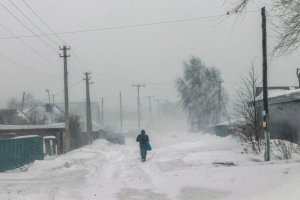And [Jesus] was transfigured before them, and his face shone like the sun, and his clothes became bright as light.” (Matthew 17:2)
Three gospels—Matthew, Mark, and Luke—tell the story of the transfiguration. The various accounts differ slightly; for example, in Matthew, it states Jesus’ face “shone like the sun,” while the others omit this observation.
This year, we celebrate the Feast of the Transfiguration on August 6 with a gospel reading from Luke. In this version, two other biblical figures appear with Jesus and a voice speaks from the cloud. And while the biblical story offers ample material for reflection, it also draws me to remember another event that occurred on August 6: the bombing of Hiroshima.
August 6, 1945: The day when the city of Hiroshima “shone like the sun” and an estimated 80,000 people were killed immediately. Tens of thousands of men, women, and children would die over the following months and years from radiation exposure. The light of the explosion would vaporize some people, leaving behind only burnt marks on the ground and walls to mark the place where they once stood.
The biblical events of 2,000 years ago are important to our faith, but I’m more drawn to the horror of August 6, 1945 and the looming possibility of that happening again.
Of course, it did happen again: On August 9, three days later, the United States bombed the city of Nagasaki, and another estimated 40,000 people died. Nagasaki was the epicenter of Catholicism in Japan, and the Urakami Cathedral served as the target for the bomb, which was three times more powerful than the one at Hiroshima.
In 1961, Trappist monk Thomas Merton wrote the anti-war prose poem “Original Child Bomb: points for meditation to be scratched on the walls of a cave.” Verse 32 says:
The bomb exploded within 100 feet of the aiming point. The fireball was 18,000 feet across. The temperature at the center of the fireball was 100,000,000 degrees. The people who were near the center became nothing. The whole city was blown to bits and the ruins all caught fire instantly everywhere, burning briskly. 70,000 people were killed right away or died within a few hours. Those who did not die at once suffered great pain. Few of them were soldiers.
Merton’s poem contrasts the horror of the bombing with the banality of its destruction. Earlier in the poem he writes, “Col. Tibbetts, who was in command of the B-29 that was to drop the bomb, felt that his bomber ought to have a name. He baptized it Enola Gay, after his mother in Iowa. Col. Tibbetts was a well balanced man, and not sentimental. He did not have a nervous breakdown after the bombing, like some of the other members of the crew.”
“Shone like the sun”: It happened both 2,000 years ago and 80 years ago. One story speaks of the God-man who lived among us. The other story speaks of the God-like power we seized to use against others. One story encourages us to know that we are all born to become the children of God. The other vibrates with the horror of what happens when humans seek vengeance on God’s children.
Catholics love Bible stories. We encourage children to act them out in schools, and we go to the movies to see them on the big screen. We love Christmas pageants and Passion plays at Easter. But are we attentive to how we live these stories today? How they are acted out in our communities, in our nations, on the world stage?
Jesus was transfigured 2,000 years ago. Will we transfigure the body of Christ so that Jesus cries out again to God: “Father, forgive them! They know not what they do” (Luke 23:24)?
This article also appears in the August 2025 issue of U.S. Catholic (Vol. 90, No. 8, page 9). Click here to subscribe to the magazine.
Image: Wikimedia Commons/Pyrocumulonimbus cloud over Hiroshima













Add comment